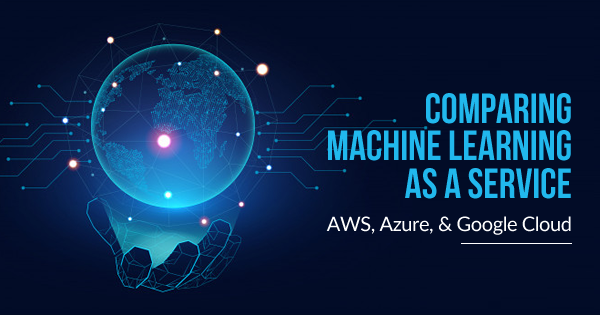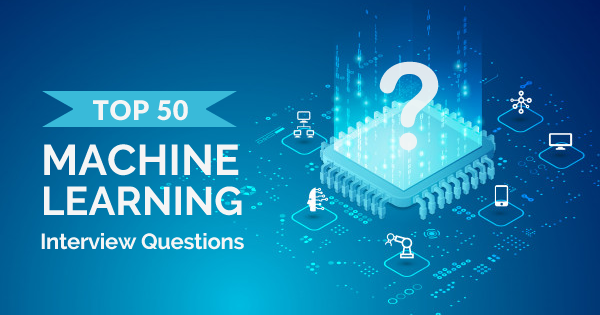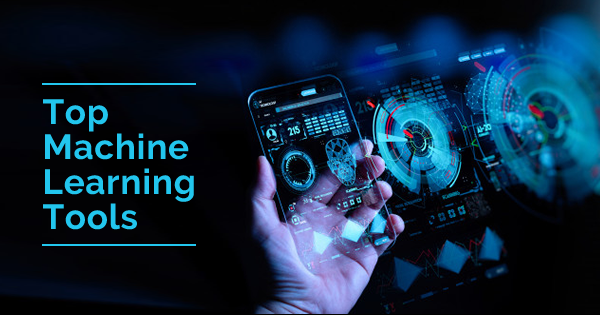Machine learning is one of the important technologies that has been changing the way businesses operate in present times. Now, the majority of enterprises assume machine learning as a topic similar to rocket science. Enterprises see high costs and skill requirements, with machine learning as the foremost barrier in its adoption. However, the delivery of machine learning as a service (MLaaS) can support enterprises in starting up a machine learning initiative. So, the candidates with a good knowledge of machine learning tools are in high demand.
MLaaS offers a wide range of services that provide artificial intelligence (AI) tools in a cloud-based computing service framework. The global MLaaS market has an estimated CAGR of 41.2% over the period from 2017 to 2023. The primary factors driving the growth of the MLaaS market include the merger of machine learning and big data, integration of advanced analytics in the manufacturing process, and the creation of massive volumes of structured and random data.
Try Now: 15 Free Practice Questions for AWS Certified Machine Learning – Specialty
Comparison of Machine Learning as a Service
Machine learning cloud services are offering flexible alternatives for enterprises of all sizes to build working models. The promising advantage of obtaining valuable insights from working models even with limited team strength is evident in machine learning cloud services. Therefore, small and medium businesses are also adopting machine learning as a service at a faster rate.
Machine learning algorithms help enterprises by streamlining their supply chain according to forecasts of product demands. So, it is essential to evaluate the machine learning offerings by the powerful trinity of the public cloud services market. The following discussion would dive into comparisons between Amazon Web Services, Microsoft Azure, and Google Cloud Platform on the basis of their MLaaS offerings.
1. Machine Learning Services for Customer Predictive Analytics
AWS (Amazon Web Services)
Users could avail of the AWS machine learning services on two different levels. The two levels include the SageMaker tool for data scientists and the Amazon ML for predictive analytics. Nowadays, companies are looking for certified professionals with AWS Machine Learning certification. So, learn more and get ahead.
-
Amazon Machine Learning
Presently, Amazon machine learning for predictive analytics is a notable competitor among automated solutions for ML. The best thing about Amazon ML is that it is ideal for operations limited to particular deadlines. Automatic and flexible data preprocessing operations alongside the facility of loading data from multiple sources improve the credibility of Amazon ML.
However, the prediction capabilities of AWS ML do not support unsupervised learning methods. The recent updates of Amazon ML introduced many improvements in various modules, frameworks, and SDKs. The prominent highlight of the recent updates in Amazon ML is the Deep Learning AMI as the virtual machine manager for Elastic Cube.
In addition, Deep Learning AMI also includes pre-built deep learning frameworks for CUDA processing. The higher automation level with Amazon ML can limit the control factor. Therefore, Amazon ML is the ideal solution in cases where you need a completely automated yet limited solution. On the off chance that you are looking for something else, then Amazon SageMaker is a vital AWS ML alternative.
Using Machine learning in cloud will increase the capabilities of the cloud. Let’s check out what machine learning and cloud computing can do together!
-
Amazon SageMaker
AWS SageMaker is a reliable alternative for data scientists to get a machine learning environment with tools for faster model creation and deployment. For example, you can find the authoring notebook tool, Jupyter, for simpler data investigation and analysis without the hassles of server management.
Amazon machine learning as a service (MLaaS) offerings with Amazon SageMaker also includes many pre-built algorithms optimized for massive datasets and computing in large, distributed systems. For example, Linear learner is an algorithm that provides a supervised method for regression and classification. Some of the other notable ML algorithms which you can find in SageMaker include:
- Factorization machines
- XGBoost
- Image classification
- K-means
- Seq2seq
- Random Cut Forest
- DeepAR
- Neural topic model (NTM)
Specific in-built SageMaker methods have stark similarities with the machine learning APIs in Amazon’s recommendations. In addition, AWS Machine Learning with SageMaker enables data scientists to experiment with the methods and implement their own datasets. Furthermore, users also have the flexibility of adding their own methods and running models through deployment features in SageMaker. Users also have the option of integrating SageMaker with machine learning libraries such as TensorFlow, MXNet, Gluon, Keras, and Torch.
So, AWS ML services can provide substantial freedom for experienced as well as beginner data scientists. The gist about Amazon’s machine learning as a service is the flexibility and limited learning curve. Enterprises that already use Amazon cloud services can definitely adopt Amazon’s MLaaS offerings without having to switch to another provider. The good news is the limited need for digging into the preparation of datasets and modeling.
Must Read: AWS Vs Azure Vs Google: Cloud Services Comparison
Microsoft Azure
The Azure Machine learning platform is a feature-rich platform for experienced and new data scientists. The collection of Microsoft’s machine learning as a service (MLaaS) offerings is similar to that of Amazon. However, Azure offers better flexibility in the case of innovative algorithms. The machine learning services by Microsoft Azure are evident in two distinct categories. One is the Azure Machine Learning Studio, and the second one is the Bot Service. The primary MLaaS offering by Azure is the ML Studio.
-
Bot Service Framework
Bot Service provides a helpful and productive toolset for bot development with a comprehensive environment for development, testing, and deployment of bots. The Bot Service does not require any form of expertise in machine learning, as it provides five specific templates for bot development.
Users could employ Node.js and .NET technologies for building bots with the help of Azure’s Bot Service. Furthermore, it is easy to deploy the bots developed with Azure on various platforms such as Skype, Facebook Messenger, Skype, Bing, Cortana, Web Chat, Office 365 email, and Telegram.
-
Azure’s Machine Learning Studio
It’s surely easy to build bots with Bot Service as an Azure MLaaS offering. However, the main offering of Microsoft in machine learning is the Azure ML Studio. The simple graphical drag-and-drop interface provides flexible execution of various operations such as data investigation, method selection, validation of modeling results, and preprocessing. Users would find a slight learning curve in their attempt to study machine learning on Azure.
The visualization of each step within the workflow of Azure’s ML studio in the graphical interface supports newcomers effectively. However, the most prominent benefit of using Azure for machine learning is the availability of multiple algorithms. Azure’s ML Studio offers support for almost 100 methods dealing with anomaly detection, classification, regression, text analysis, and recommendation.
-
Cortana Intelligence Gallery
Another interesting feature in Microsoft’s machine learning as a service (MLaaS) offering for predictive analytics is the Cortana Intelligence Gallery. The Cortana Intelligence Gallery includes a combination of machine learning solutions contributed by the community of data scientists. The Cortana Intelligence Gallery feature with Azure ML helps in better adoption of machine learning. In addition, the platform updates to Azure’s MLaaS platform emphasize primarily on Python Machine Learning SDK.
A recent update includes the preview for a new user interface for Azure ML Workspaces. The new user interface can help developers in deploying models, data visualization, and working on the preparation of datasets. The features of the web interface for supporting all popular browsers alongside a simple navigation approach would reduce the barriers to its adoption.
Azure’s Machine Learning Services Platform
The machine learning as a service (MLaaS) offerings of Microsoft Azure also includes the notable Azure Machine Learning Services. In September 2017, Microsoft introduced a new set of ML-based products. The ML Services platform provides a supportive environment for building models, experimenting with them, and using a wide assortment of open-source components and frameworks.
ML Services platform does not offer in-built methods and also implies the need for custom model engineering. The advantage of Azure’s ML Services platform is evident in the powerful combination of tools for the management of ML experiments. Furthermore, ML Services also allow the use of popular frameworks such as sci-kit-learn and TensorFlow that are not available in ML Studio.
ML Services also offer features for deploying models into production in a third-party service such as Docker. Let us take a look at the different components in the ML Services platform to understand the functionality of Azure’s machine learning as a service (MLaaS) offerings.
- ML Services platform offers an environment for hosting, versioning, management, and monitoring of models running on Azure, on-premises as well as Edge devices.
- Proprietary Python packages with libraries and functions support tasks such as forecasting, hardware acceleration, computer vision, and text analysis.
- Visual Studio Tools for AI is an extension that helps in adding tools to the VS IDE for working with deep learning.
Different Python tools and frameworks offer the flexibility to engineers for building different models. In addition, ML engineers could also compare the models and set the project to an earlier configuration. Engineers could also leverage the ML Services platform for continuing development from any specific instance in history.
The Workbench product is another effective machine learning as a service (MLaaS) offering on the ML Services platform of Azure. It provides a simple desktop and command-line environment equipped with evaluation tools and dashboards for tracking model development.
The adoption of Azure’s MLaaS offerings depends considerably on the requirements of the user. New users without considerable fluency in coding and the machine learning landscape could go for the ML Studio. On the other hand, professional AI developers and data scientists prefer to go for the ML Services platform.
Preparing to become a certified Azure professional? Check our Azure Certifications Training Courses now!
Google Cloud Platform
The machine learning as a service facility on Google Cloud Platform is similar to that of Amazon. GCP offers its machine learning and AI services in two different categories or levels. The Google Cloud AutoML is an ideal cloud-centric ML platform for new users. On the other hand, the Google Cloud Machine Learning Engine is ideal for fluent data specialists.
1. Google Cloud AutoML
Google Cloud AutoML allows customers to upload their datasets, train the custom models, and deploy the models on websites. AutoML comes with full integration with Google’s services alongside storing data in the cloud. In addition, the REST API interface allows the deployment of trained models in Google Cloud AutoML. Furthermore, users could access all AutoML products through a simple graphical interface. The products include training models for structured data, image, and video processing services, and natural language processing and translation engine.
2. Google ML Engine
The Google Cloud Machine Learning Engine is the total opposite of the Google Cloud AutoML. Google ML Engine offers flexibility and support for using cloud infrastructure with TensorFlow as the machine learning foundation. Furthermore, Google is also checking the compatibility of other ML libraries such as Keras, XGBoost, and sci-kit-learn. Furthermore, Google ML Engine also introduced new in-built algorithms in its recent update.
Learn about the Google Cloud Platform glossary, architecture products, services, and certifications in this Google Cloud cheat sheet!
Machine Learning APIs
Machine learning as a service also entails the use of high-level APIs apart from completely set up platforms. APIs do not require any technical knowledge of machine learning. Users have to feed their data in the APIs and get the results accordingly. The APIs from notable cloud service providers is evident in three distinct categories.
- Text recognition, translation and textual analysis.
- Image or video recognition and related analysis.
- Other analytics services which are not categorized.
Now, let us compare the Machine Learning APIs of AWS, Azure, and Google Cloud in these categories.
2. APIs for Speech and Text Processing
AWS
Amazon has a wide range of offerings in its machine learning as a service APIs for common tasks in speech and text analysis. The Amazon Lex API can recognize written and spoken text through its natural language processing (NLP) and automatic speech recognition (ASR) capabilities. Amazon Transcribe API is suitable specifically for the recognition of spoken text. The Amazon Polly API helps in the translation of the text into speech.
Amazon Comprehend is a detailed API with an NLP set of APIs that focus on various text analysis tasks. Amazon Comprehend now provides support for language recognition, topic modeling, entity extraction, key phrase detection, and sentiment analysis. Finally, Amazon Translate API helps in the translation of texts through the use of neural networks for better translation quality.
Microsoft Azure
Microsoft also has high-level APIs and Cognitive Services, which integrate effectively with any infrastructure. The speech translation APIs include four APIs with different natural language processing techniques for speech recognition. The four APIs are Translator Speech API, Bing Speech API, Speaker Recognition API, and Custom Speech Service.
In the case of language translation APIs, the notable mentions are Language Understanding Intelligent Service (LUIS), Text Analysis API, Translator Text API, Bing Spell Check, Linguistic Analysis API, and Web Language Model API. All these APIs focus on specific tasks, just like the different APIs in Amazon Comprehend.
Google Cloud
There are many similarities between the functionalities of Google Cloud Machine Learning APIs and those of Amazon and Microsoft Azure. Furthermore, Google ML APIs offer an alternative for training custom models. The prominent APIs in Google Cloud’s MLaaS portfolio includes Dialogflow, Cloud Speech API, AutoML translation API, Cloud Translation API, Cloud natural language API, and AutoML Natural Language API.
In the case of image and video processing, APIs, AWS, Azure, and Google Cloud have similar APIs. However, Google Cloud offers an extensive toolset as compared to Azure and AWS in this category. AWS has Amazon Rekognition, and Azure provides Microsoft Azure Cognitive Services as image and video recognition APIs. On the other hand, Google Cloud offers Cloud vision API, AutoML Video Intelligence Classification API, Cloud Video Intelligence, and AutoML Vision API.
Check out the following table to have a quick look at the differences:
|
Criteria |
AWS |
Azure |
Google Cloud |
|
Machine Learning Services for Predictive Analytics |
|
|
|
|
Machine Learning APIs for speech and text recognition |
|
|
|
|
Machine learning APIs for image and video recognition |
Amazon Rekognition |
Microsoft Azure Cognitive Services |
|
|
In-built algorithms |
Available with Amazon SageMaker |
No in-built algorithms |
Available with Google ML Engine |
|
Classification |
Allowed |
Allowed |
Allowed |
|
Regression |
Allowed |
Allowed |
Allowed |
|
Clustering |
Allowed |
Allowed |
Not Allowed |
|
Supported Frameworks |
|
|
|
AWS Deep Learning brings the power of Machine Learning and Artificial Intelligence together. Let’s understand what is AWS deep learning!
Conclusion
A closer look at the different machine learning as a service (MLaaS) offerings by prominent cloud service providers delivers clarity. The availability of a wide variety of machine learning solutions, however, tends to be a prominent confusing element. AWS, Azure, and Google Cloud- all of them differ in their machine learning services in terms of their algorithms, tasks, and required skill sets.
Therefore, the best way forward is to establish an optimal plan for your machine learning strategy as early as possible. Even if flexibility is a prominent differentiator among all the available machine learning services, domain expertise, and data science skills would be mandatory. Therefore, enterprises should aim at finding a reliable attribute such as pricing forecasts for choosing the right cloud-based machine learning service vendor.
Preparing for AWS certified machine learning specialty certification exam? Try our AWS Machine Learning Specialty practice tests to check your preparation level and get fully ready for the exam!
- Top 20 Questions To Prepare For Certified Kubernetes Administrator Exam - August 16, 2024
- 10 AWS Services to Master for the AWS Developer Associate Exam - August 14, 2024
- Exam Tips for AWS Machine Learning Specialty Certification - August 7, 2024
- Best 15+ AWS Developer Associate hands-on labs in 2024 - July 24, 2024
- Containers vs Virtual Machines: Differences You Should Know - June 24, 2024
- Databricks Launched World’s Most Capable Large Language Model (LLM) - April 26, 2024
- What are the storage options available in Microsoft Azure? - March 14, 2024
- User’s Guide to Getting Started with Google Kubernetes Engine - March 1, 2024




Valuable information